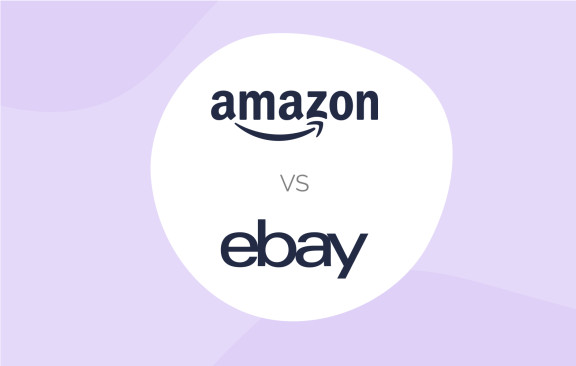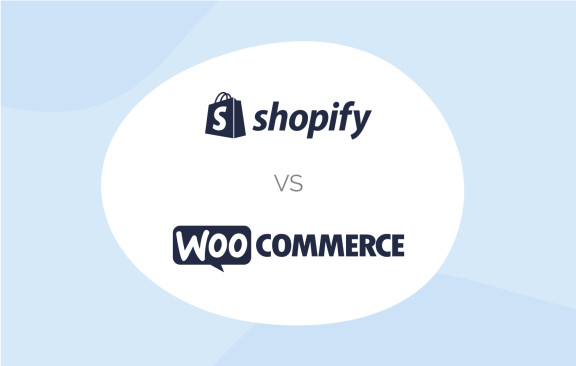Where to Sell Online
There's no shortage of marketplaces and selling strategies for online businesses. But what do each of them offer? These resources will help you the best fit for YOU.

Learn How to Sell on Amazon
Amazon, the behemoth of eCommerce! Learn how to become a seller here and take advantage of the platform's continued upward trajectory.
Global Sales Success from India with a Practical Guide for Amazon Newcomers
Over 120,000 Indian sellers are cashing in on Amazon’s global marketplace, yet most new sellers hit roadblocks before their first sale. If you’re ready to break into Amazon from India, you need more than just ambition. You need the right roadmap. This guide strips away the fluff and gives you the clear steps, tools, and warnings you need to succeed. Ready to start selling smart? Let’s dive in.
Why Selling on Amazon from India is a Massive Opportunity
Amazon stands as a colossal gateway for Indian sellers, poised to transform cross-border eCommerce with projected sales reaching a staggering $8 billion. This platform does more than transcend geographical boundaries; it empowers you to showcase your products to a global audience from the comfort of your home in India. Imagine trading without the constraints of a physical storefront-it's a game-changer for amb
A Comprehensive Comparison: Amazon vs. eBay – Which Platform is Right for Your Online Business?
Many sellers make the mistake of putting Amazon and eBay in the same e-commerce basket. They fail to realize that the differences between Amazon and eBay are profound.
Let's use an analogy to illustrate my point: Imagine that you are a mechanic for a moment. Now someone with no experience with cars walks in and tells you that repairing a custom hotrod is the same as fixing a pickup truck! You would inform them that yes, the concept is the same, but you go about it in very different ways.
This is the correct way to understand the differences between Amazon and eBay. Unfortunately, these differences are often hard for novice sellers to recognize.
A good understanding of these differences enables a seller to potentially earn a good profit on both sites. But a lack of knowledge can quickly cause a seller to lose a lot of money fast.
How Amazon Arbitrage Can Make You High Profits (Step by Step Guide)
How does Amazon arbitrage work, and is it still a profitable business model?
Quick Answer: Amazon arbitrage is an ecommerce strategy that involves buying products from a retail store or online marketplace at a lower price and reselling them on Amazon for a higher price. Retail arbitrage can be profitable with the right product selection and sourcing.
Post Contents: [ show hide ]
Introduction
How much do you need to begin Amazon retail arbitrage?
How Amazon arbitrage actually works - step-by-step
Amazon arbitrage step-by-step guide
Research profitable products
Set up a seller account
Find suppliers
Calculate profitability
List products on Amazon
Choose fulfillment method
Monitor and manage inventory
Optimize pricing
Provide excellent customer service
Scale your business
How profitable is Amazon arbitrage?
Amazon re
How to Quickly Get Reviews on Amazon Legally (9 Proven Ways)
You can encourage organic reviews through post-purchase emails, packaging inserts, Amazon’s “Request a Review” button, or participating in Amazon’s Vine Program.
Learn How to Sell on eBay
The original dropshipping portal, eBay has been opening doors for thrifty entrepreneurs for years. Learn how to use it to your best advantage.
Master Brand Sales on eBay by Navigating VERO Risks, Authentic Sourcing, and Safer Alternatives
Thinking about flipping brand name products on eBay? You’re not alone. With over 180 million buyers browsing eBay every month, the lure of selling big-name brands is real. But eBay’s rules aren’t always clear, and one wrong move can get your account flagged or worse. So, what’s actually allowed, and how do you stay safe (and profitable) in the game? Let’s break it down.
The Real Opportunity (and Hype) in Branded eBay Sales
Selling branded products on eBay has become increasingly attractive, thanks to its expansive market and high demand for quality brand goods. Despite the enticements, sellers must navigate complex brand-related policies and potential pitfalls.
The Appeal of Branded Sales on eBay
Many entrepreneurs are drawn to branded sales for several reasons:
Increased credibility,
Higher profit margins,
Unlock eBay PowerSeller Status With Proven Steps to Boost Sales and Build Trust
Want to stand out and earn more on eBay? PowerSellers move more products, build stronger trust, and get perks that most sellers miss. As online marketplaces get more competitive, reaching PowerSeller status is a serious edge—only about 4% of eBay sellers hold it. Ready to level up? Here’s how you can join their ranks.
eBay Antique Selling in 2026: Trends, Sourcing, and What Really Sells
Hot Tips for Selling Antiques on eBay:
Spot Value in the Details: Always check for maker’s marks, hallmarks, or signatures—they're often the key to identifying hidden gems.
Check Sold, Not Listed: Use eBay’s Sold Listings filter to see what items actually sold for—not just what people are asking.
Tell the Story: Collectors buy history. Add era, origin, and any known backstory to boost buyer interest and trust.
Antiques aren’t just relics of the past—they’re one of the hottest, most profitable categories on eBay. Whether it’s a hand-painted porcelain plate from 1910 or a sterling silver tea set from post-war Europe, collectors across the globe are actively hunting for these timeless treasures.
And here’s the kicker: you don’t need to be an antiques expert or own a brick-and-mortar shop to cash in. With s
Free Shipping on eBay: The Truth Behind Profitability
When selling on eBay, offering free shipping often appears to be a surefire way to attract buyers and increase sales. After all, everyone loves the word "free," and buyers naturally gravitate toward listings that remove the guesswork of added shipping costs. But for sellers, the reality of free shipping is far more nuanced.
Does offering free shipping lead to increased profitability? The answer is not as straightforward as you might think. While free shipping can improve your visibility and appeal, it can also come at the expense of your margins if not carefully managed. In this guide, we’ll explore the economics of free shipping, delve into eBay’s fee structure, and offer strategies to help you decide if free shipping is a viable option for your eBay business.
How eBay’s Fee Structure Impacts Free Shipping
The cornerstone of understanding free shippi
Learn How to Sell on Shopify
Shopify is the fastest-growing store builder on the web, with constantly improving features. Find out how to best use it to grow your business.
9 Trust Badges Used by 7-Figure eCommerce Stores (Instant Conversion Boost)
Launched a store but conversions are slow?
Looking for that special sauce for boosting sales?
If you’ve been trying in vain to find a reliable way to improve bounce rates, gain customer trust, and skyrocket conversions, look no further. This article will tell you how to do it.
Whether you’re a dropshipper or wholesale retailer, eCommerce trust badges are an awesome, yet often overlooked way to give your store that extra lift it needs to really get the profits rolling. Plus, they can give your brand that all-important good reputation on the web.
Online stores have been cropping up left right and center, especially since the pandemic, and there is a veritable ocean of places customers can choose to buy from online. Unfortunately, for all its ease and conve
Shopify vs. WooCommerce: Which is Better?
WooCommerce and Shopify are two of the top ecommerce platforms for running an online business. Combined, they account for half of the ecommerce platform pie in terms of usage.
What makes them popular and how do they stack up against each other? If I’m a new dropshipper, for example, which platform will be the best for me?
Decisions, decisions, decisions. To help you understand how each product works, we’ve created this comparative guide with a focus on WooCommerce and Shopify’s pricing structures.
Main Difference Between Shopify and WooCommerce
Here’s the thing, these two are completely different beasts in terms of execution. From how each one integrates into your business as a platform to how each product is priced, b
eCommerce Breakdown: BigCommerce vs. Shopify
Selling online is truly the wave of the retail future. Savvy retailers and newbies alike are well aware that this wave is just starting to crest. That's why there's such intense competition to be the best online store builder around. Today, we take a deep dive to see which eCommerce platformis right for you: BigCommerce or Shopify? Which one will prevail in the long run? That's a good question, which we'll attempt to answer in this article.
Side by Side Comparison of 10 AliExpress Reviews Importers for Shopify
Adding reviews to your product pages will boost sales. Everyone knows that. But how do you get reviews when you haven’t made any sales yet? By using an AliExpress review importer. These tools can help you quickly import product reviews to your Shopify store. It’s an efficient and effective way to use customer feedback to increase conversions.
Selling on Online Marketplaces
Marketplaces. An ideal stepping stone for budding eCommerce businesses. Where to sell and what to consider? Learn all about it here.
Elevate Your Etsy Shop With SaleHoo Sourcing for Authentic Handmade-Style Products and Growth
Etsy’s marketplace is exploding over 100 million buyers flocked to the platform, hungry for products that feel personal, creative, and authentic. But with so many sellers, how do you make your shop stand out? The secret: blending the handmade vibe Etsy buyers crave with smart sourcing strategies, like tapping into SaleHoo’s network for unique, customizable goods. Ready to level up your Etsy game and outshine the competition? Let’s break down how you can source, brand, and scale your shop for real, lasting success.
The Handmade Advantage
Imagine a world where the charm of handmade items is seamlessly married with the efficiency of smart sourcing. Etsy continues to thrive on this synergy. Known for its vibrant community and unique product offerings, the platform has carved out a niche that appeals to buyers who crave more than just a transaction, they seek a
Smarter Sourcing and Selling Strategies Beyond Temu for Online Sellers in 2026
Online selling is exploding, with platforms like Temu making waves for both buyers and resellers. With e-commerce projected to hit $7 trillion globally, sellers are hustling to find affordable sources and competitive platforms. But Temu isn’t the only game in town. If you’re looking to maximize margins, dodge heavy competition, or just find easier sourcing, it’s time to explore the best alternatives. Where else can you score cheap products and sell with confidence?
Should you be selling on Craigslist?
You would have to have been living under a rock for the past 5 years to not have heard of Craigslist. However, what you probably don't know is that Craigslist, with their 30 million visits per month, gets almost as much traffic as the almighty eBay, and for all us online retailers, it is 100% free to use!
Could this be the ultimate eBay alternative? Perhaps. Let's find out more...
What is Craigslist?
Often described as an online community, Craigslist is a platform for users to advertise products or services via online classified advertisements. It's a popular place for job or employee seekers, which is how the site earns money, but more importantly, it is also a platform where you can reach a potential audience of millions, and sell, sell, sell!
While Craigslist has subdomains for over 450 cities all around the world, it has a strong local focus and encoura
How to Calculate eBay Selling Fees in 2026: A Step-By-Step Guide
Selling on eBay is quite lucrative, but you need to know the ins and outs of making the most of the platform. Calculating selling fees can be a tall order because several add-ons will affect your profit if you are not savvy about it. eBay imposes insertion fees and final value fees on all items. There are shipping costs and international fees to consider. If you are a big business with many products for sale, you need to have an eBay store, which can only be done by subscription.
Selling on eCommerce Platforms
You want to build your own online store, but there are so many options! Find out the ins and outs of different platforms here.
Master the Leap from Amazon to Shopify with Proven Strategies to Own Your Brand and Future
The e-commerce landscape is shifting fast. As of now, more Amazon sellers are jumping ship and building their own Shopify stores than ever before. Why? Marketplace fees, algorithm changes, and the hunger for brand control are pushing sellers to seek ownership. But moving from Amazon’s walled garden to your own storefront isn’t just a tech swap, it’s a mindset shift. Ready to own your brand, your customers, and your future? Let’s break down how to make the leap (and thrive).
The Amazon Exodus - Why Now Is the Year to Build Your Own Store
The e-commerce industry never sleeps. As we approach, a significant shift is taking place: over 40% of top Amazon sellers are now operating their own Shopify stores. But why this change, and why is now the perfect time to make the leap to owning your storefront?
"Owning your store" is more than just a s
12 Essential Elements Your eCommerce Site Needs to Boost Sales in 2026 (with Examples for each!)
As the world of eCommerce evolves, simply having a website isn't enough. Your site must actively convert visitors into buyers, offering a seamless and trustworthy experience. Is your eCommerce site designed to sell?
Many sites lose potential sales because they fail to view their storefronts from the customer’s perspective. They might have eye-catching designs, but lack user-friendly elements. By focusing on the right elements that enhance user experience, build trust, and increase functionality, you can boost conversions and stay competitive.
Below are 12 essential elements that every eCommerce website should implement to optimize sales.
1. Clear, Recognizable Logo
Amazon’s simple yet memorable smile logo is an integral part of their branding. As one of the largest eCommerce giants, Amazon shows the importance of a professional logo in establishing tr
Unlocking the Full Potential of Your Online Store: A Guide to eCommerce Optimization
So, you’ve launched an online business venture, huh?
That’s great.
Whether it’s dropshipping, Amazon Affiliate marketing, info products, Software as a Service (SaaS), or whichever eCommerce venture you’ve embarked on, online is where the riches are these days.
While your enterprise might be profitable, I’ve got some good news for you. You can still grow even more.
How?
Through smart eCommerce optimization. By fine-tuning what you are already doing, you can close more sales and maximize profits.
In this guide, I will give you 12 proven eCommerce optimization tips to boost your online business. But before we get into the nitty-gritty, let’s discuss your store’s vital but unseen foundation—the store architecture.
eCommerce Architecture: Your Online Store’s Foundation
How you set up your store determines wh
The Ultimate Guide to Prebuilt Shopify Stores: Unlocking Success with Turnkey, Custom, and Established eCommerce Solutions
In the fast-paced world of eCommerce, the allure of prebuilt Shopify stores continues to captivate both novice and experienced entrepreneurs.
In-depth Courses
Fast-track your success with in-depth eCommerce training from the pros
Learn how to successfully build, launch, and grow your online store with courses taught by world-renowned eCommerce professionals. Exclusive to SaleHoo.
Featured by






















